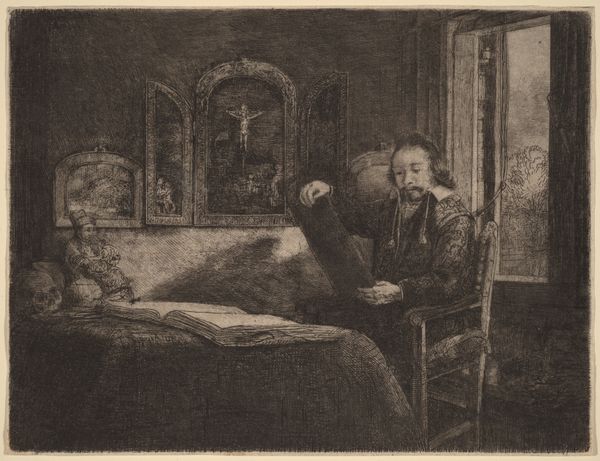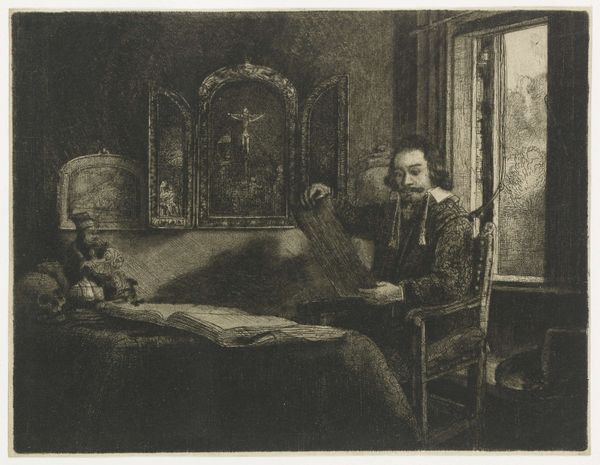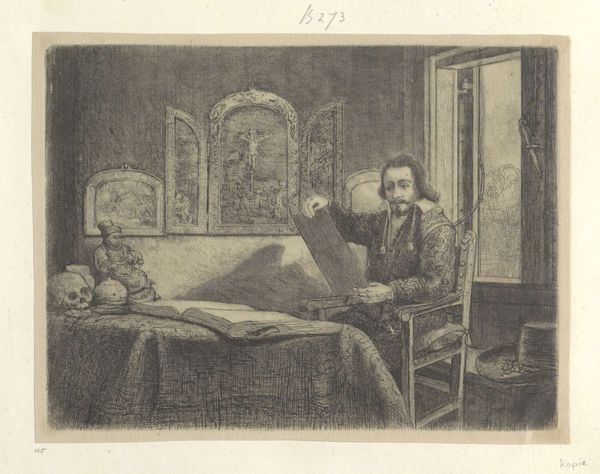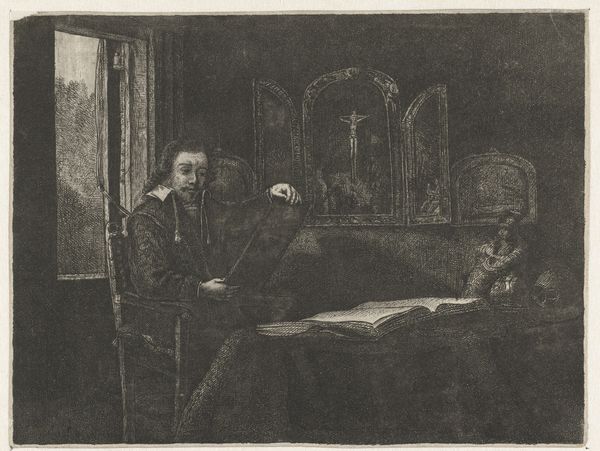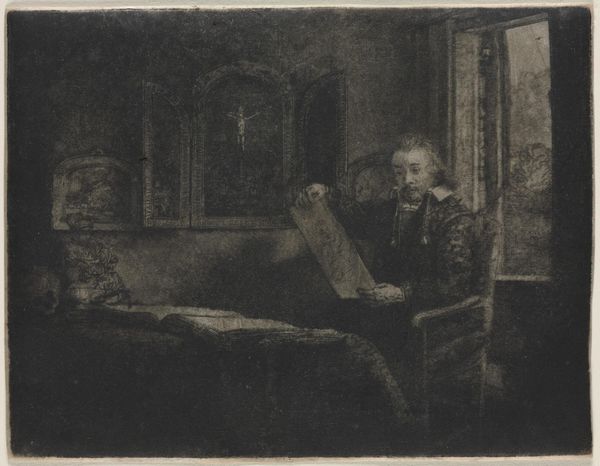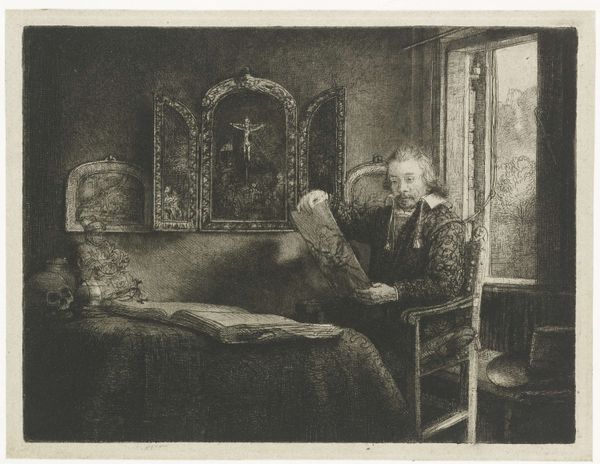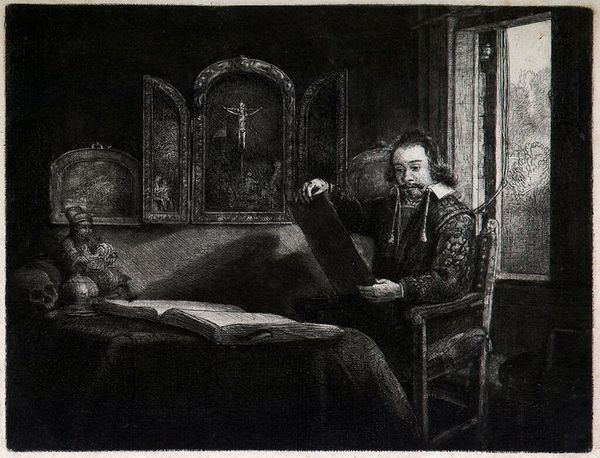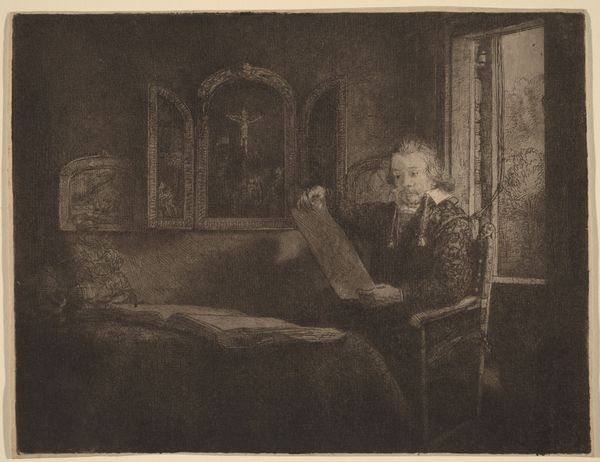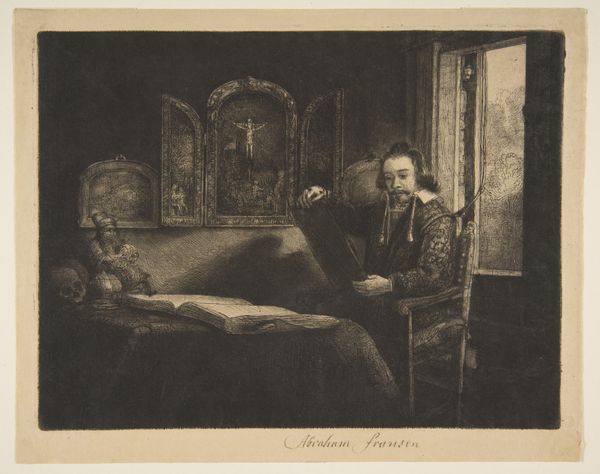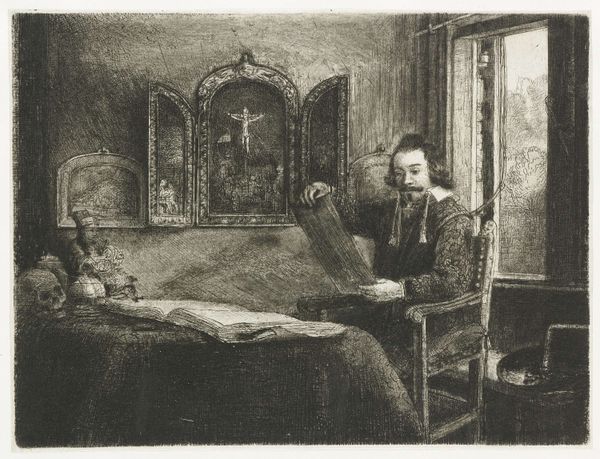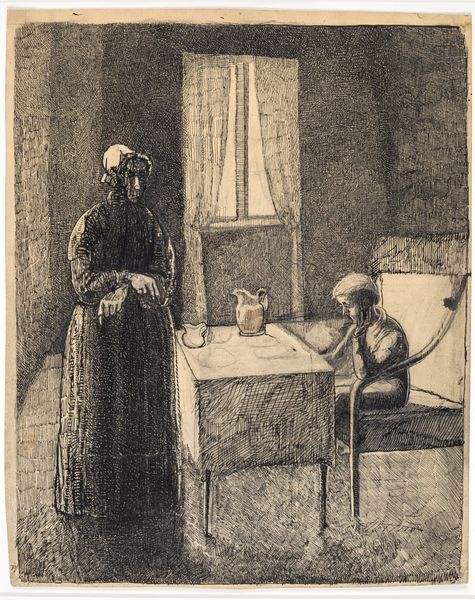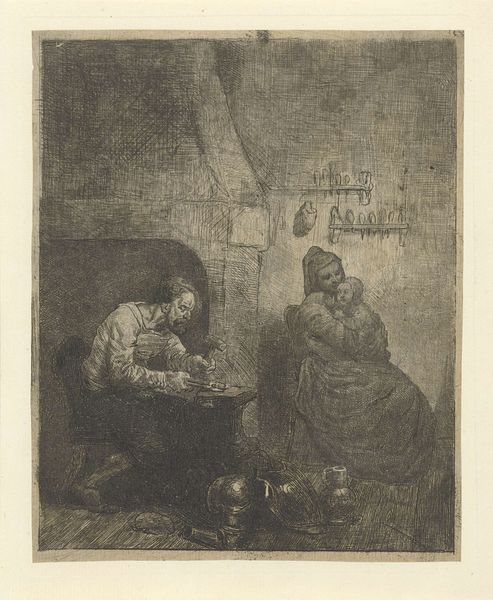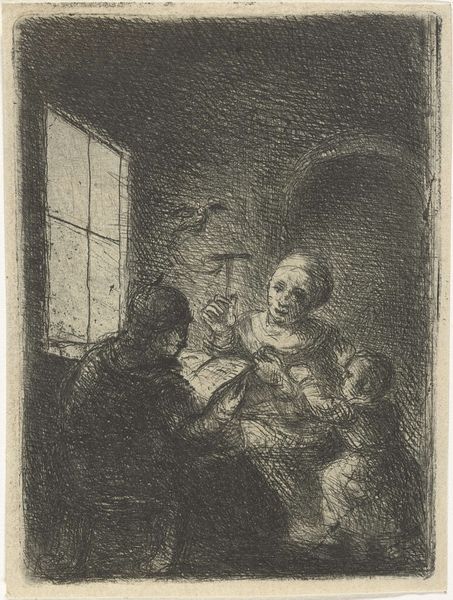
print, etching
#
portrait
#
baroque
#
dutch-golden-age
# print
#
etching
#
vanitas
#
genre-painting
#
history-painting
Dimensions: 4 11/16 x 8 1/4 in. (11.9 x 20.9 cm) (plate)
Copyright: Public Domain
Curator: Here we have Rembrandt van Rijn's 1657 etching, "Abraham Francen." It's currently housed here at the Minneapolis Institute of Art. Editor: The mood is immediately striking – shadowed and introspective. There’s such meticulous detail, given it's an etching, a print. The textures look tactile. Curator: Indeed. Rembrandt, particularly during the Dutch Golden Age, pushed the boundaries of etching. Notice how the play of light and shadow isn't just aesthetic but dramaturgical, almost theatrical, highlighting the sitter. This is a genre painting, though, or arguably a history painting due to its themes. Editor: The use of light makes you focus. You look at that paper that the person in the portrait is holding in a more conscious way. How do you get such depth and tonal variation out of essentially, scratching lines in a plate? Curator: That depth is precisely where Rembrandt's skill shone through. He combined different biting times and layering techniques – he sometimes reworked plates over decades to achieve a specific vision. And considering the social function of prints at the time – they were distributed among a wide audience, allowing artists a source of income separate from single commissions, expanding access to art beyond wealthy patrons. Editor: Interesting you should mention wider audiences, since the work also calls to mind "vanitas" themes. Beyond portraiture or some documentation of history, this print has that skull included to communicate something about the process of being or working. The idea of time spent, materials used and repurposed – so crucial to the moment of its making – feels quite present here. Curator: Absolutely. And that positioning of the sitter against both sacred and scholarly elements–the crucifix and the book– invites reflection on knowledge, mortality, and artistic legacy itself. Rembrandt, ever conscious of his place within art history. Editor: I appreciate seeing what appears to be an incredibly crafted image, but with an eye always on materials, it becomes more layered than it may initially seem. Curator: Well, considering his influence then and the etching's survival into our collection, I would say Rembrandt's legacy certainly endures.
Comments
No comments
Be the first to comment and join the conversation on the ultimate creative platform.
